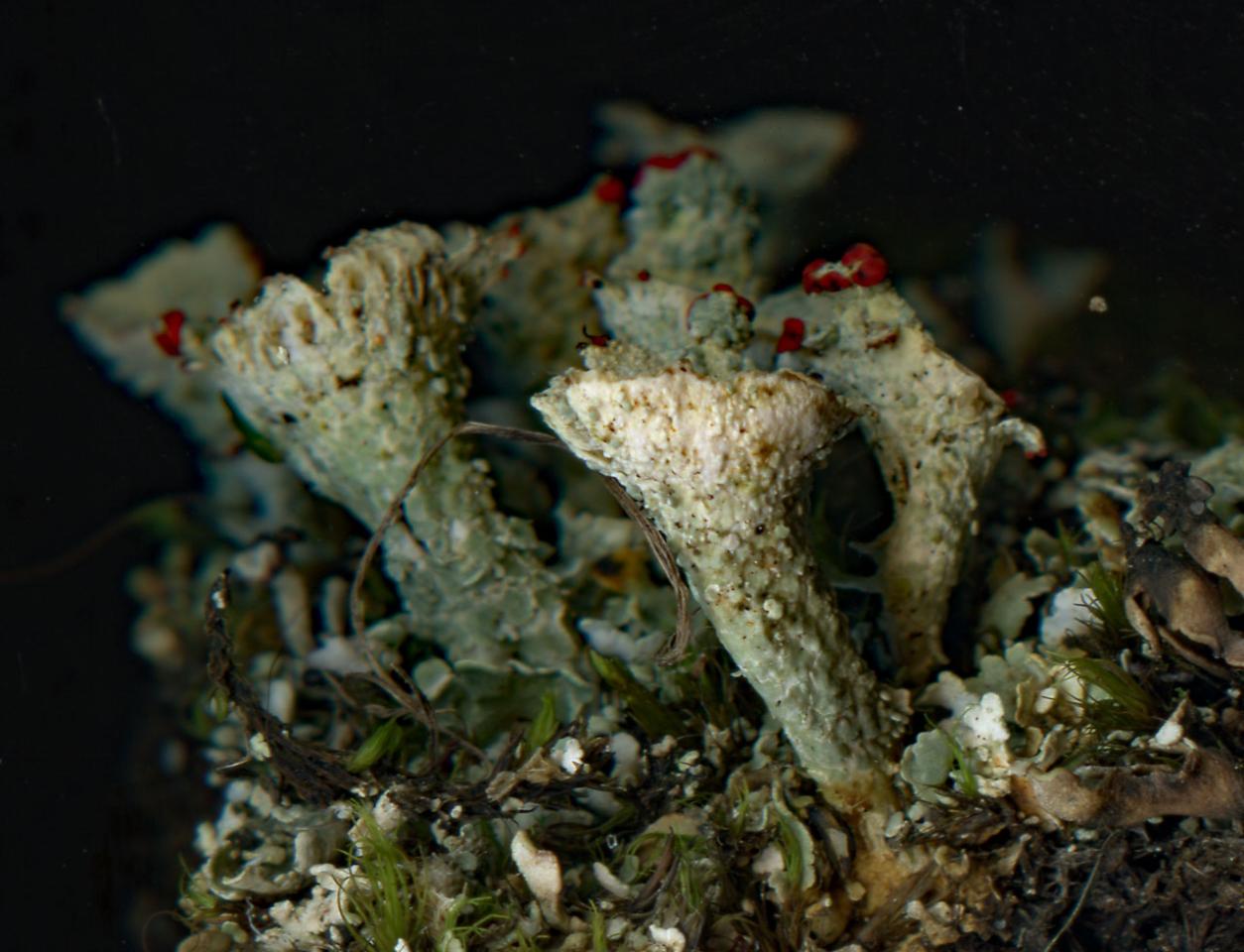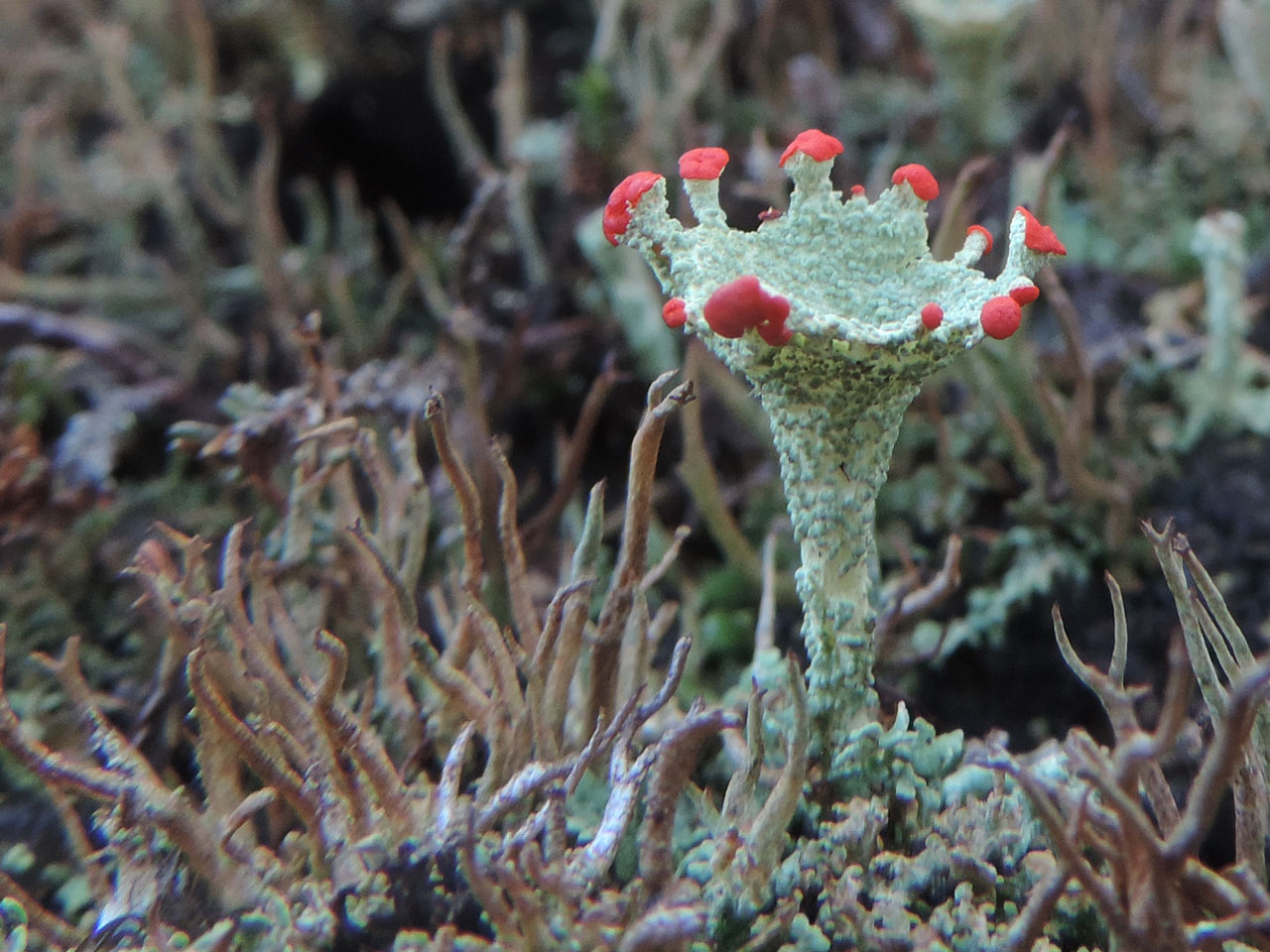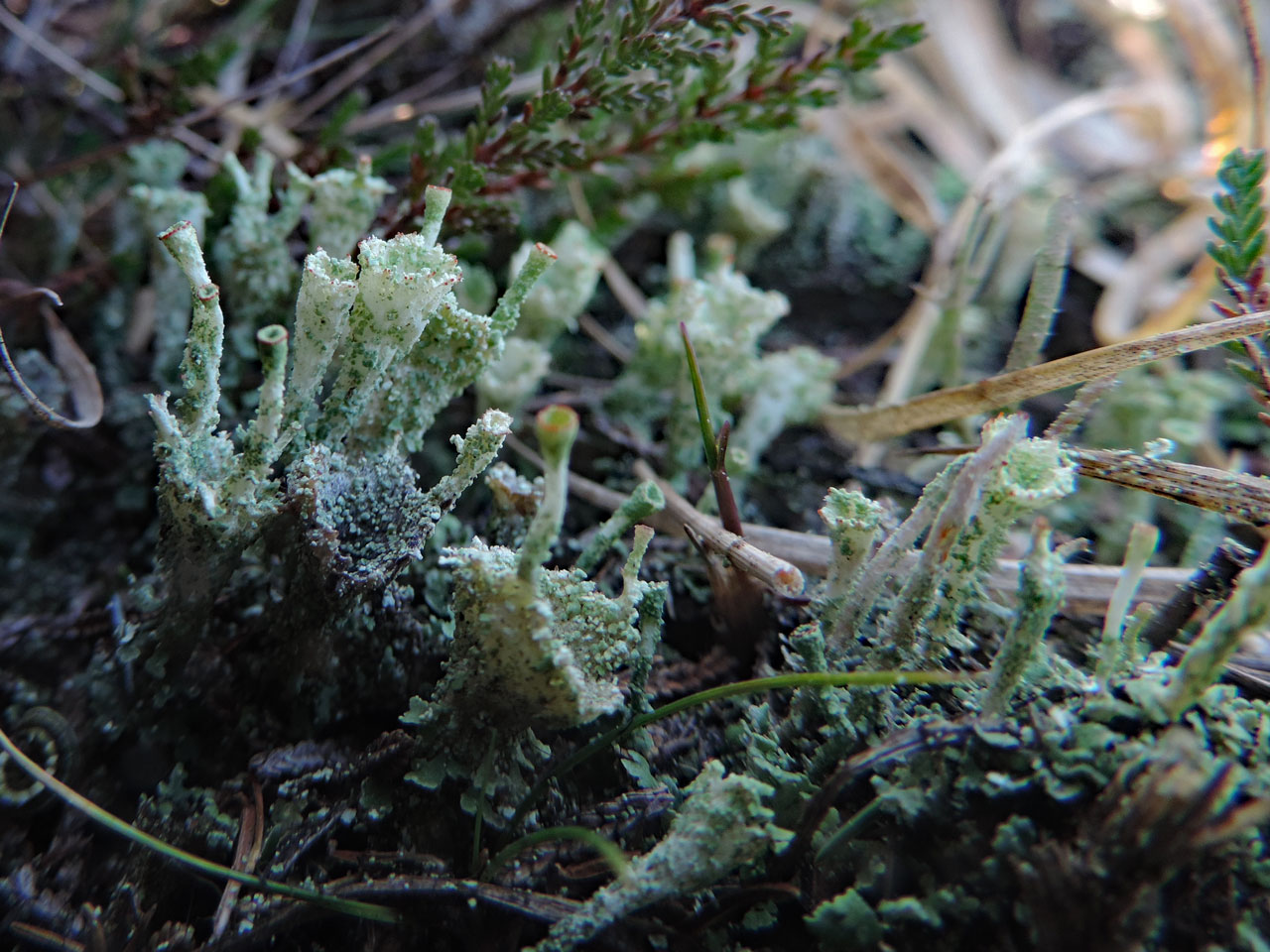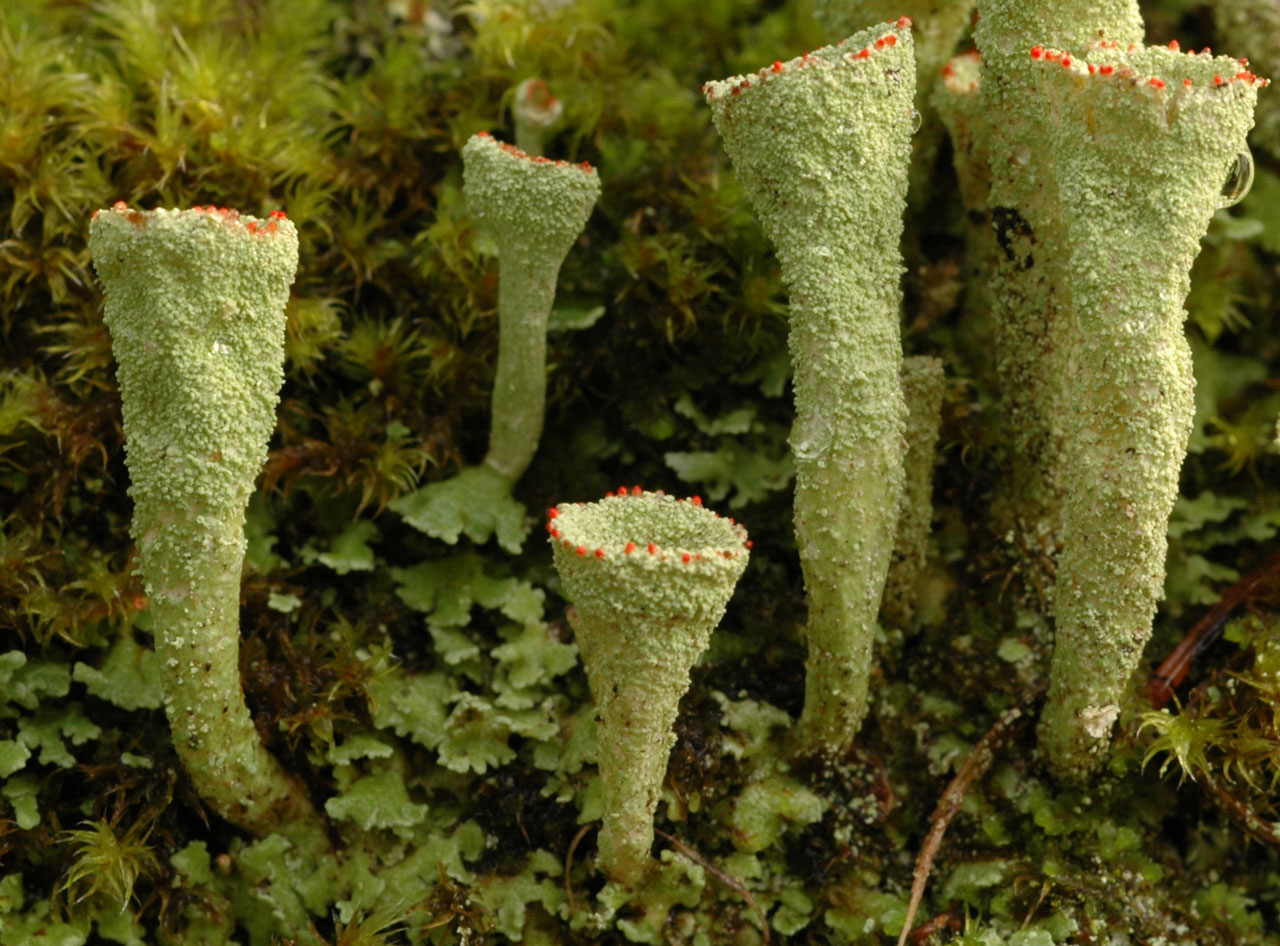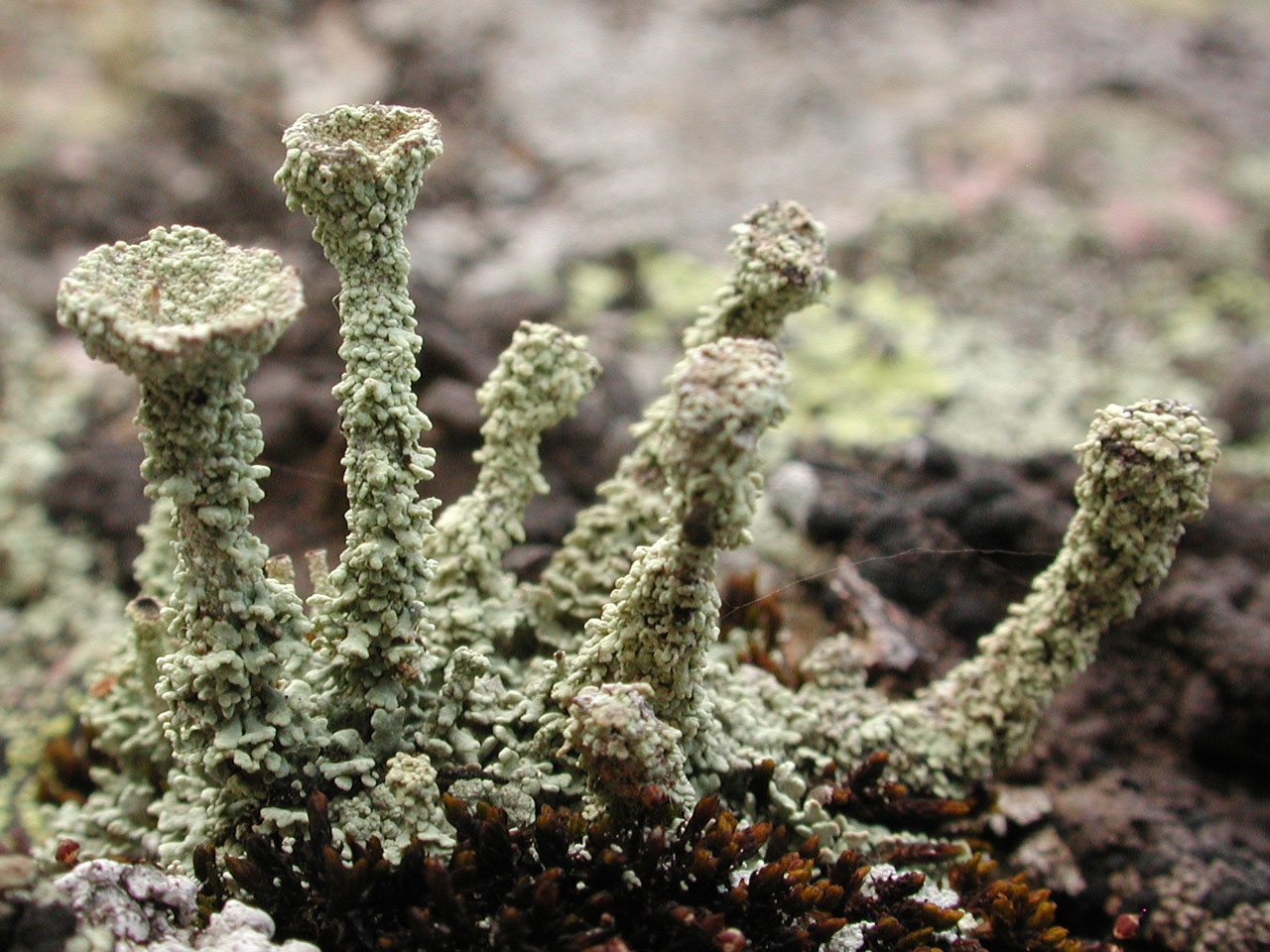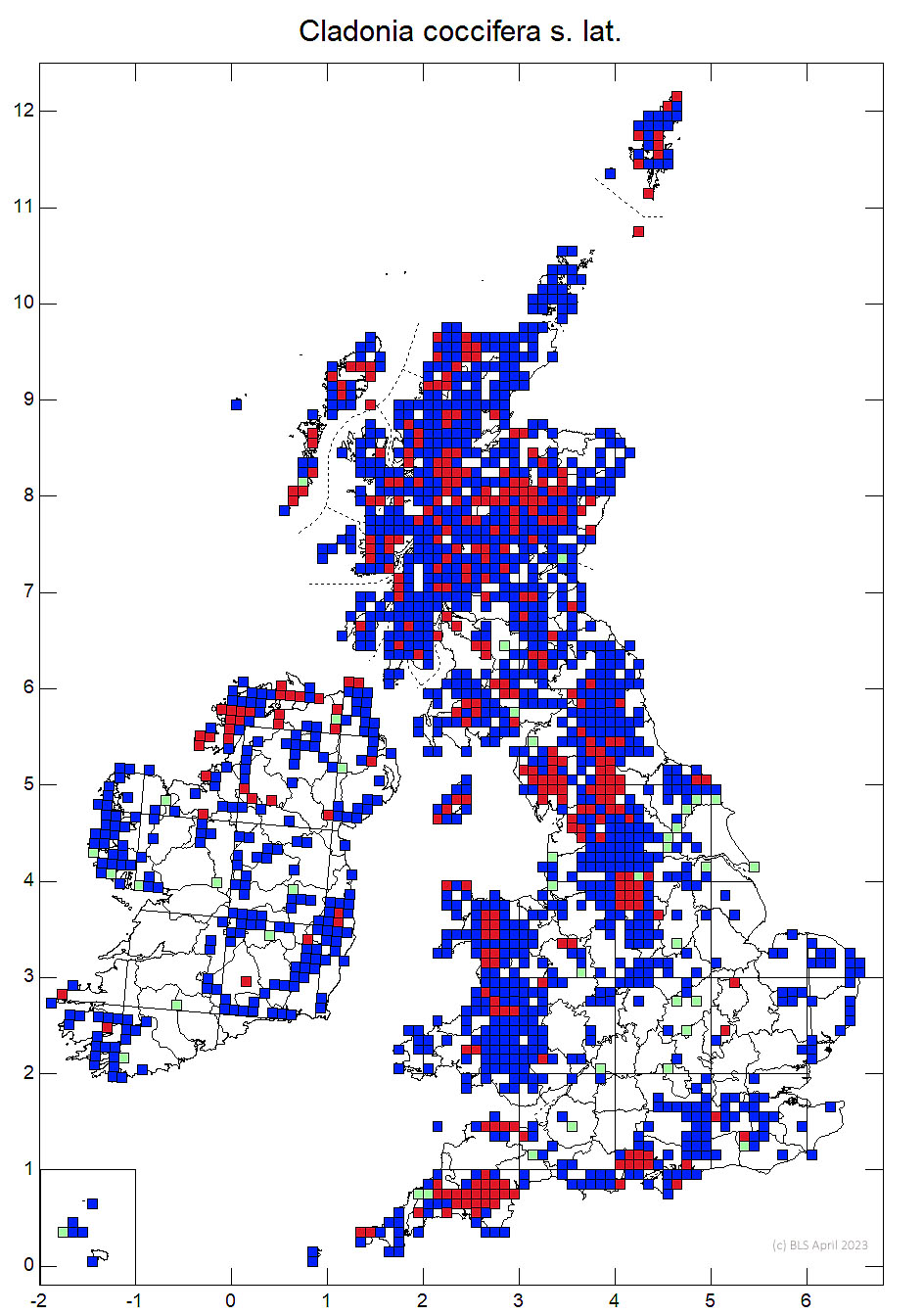Cladonia coccifera s. lat.
The Cladonia coccifera aggregate includes Pixie Cups with red apothecia, the yellow-green colour of the podetia (usnic acid) and Pd– reactions. The species included are Cladonia borealis, Cladonia coccifera s. str., Cladonia diversa, C. pleurota and C. straminea, with C. deformis and C. sulphurina closely related but with less well developed cups. Spot tests are mostly unhelpful for distinguishing taxa within this group and subtle morphological distinctions are important for species delimitation.
The Cladonia coccifera aggregate as treated by James (2009) forms a broadly monophyletic group of Cladonia borealis, Cladonia coccifera s. str., Cladonia diversa, C. pleurota and C. straminea within the Subglaucescentes clade along with C. deformis and C. sulphurina. Spot tests are mostly unhelpful for distinguishing taxa within this group (see table below) but TLC may be useful for identification in some cases (see Pino-Bodas et al, 2021 for full details of the chemistry). Subtle morphological distinctions remain important for species delimitation. Sterile specimens of this and other members of the aggregate are separated from C. pyxidata by their yellow colour (usnic acid), Pd– reaction and chemistry.
Summary of the chemistry and morphology of the Cladonia coccifera complex. Populations outside of Britain and Ireland may show different chemotypes. Data taken from James (2009) and Ahti & Stenroos (2013).
| Species | K | C | KC | Pd | UV | Morphology |
| borealis | – | – | Y | – | – | Podetial surface smoothly corticate with flat plates outside and flattened corticate granules inside the cups |
| coccifera | – | – | Y | – | – | Podetial surface corticate to areolate with bullate granules inside the cup |
| deformis | – | – | Y | – | – | Podetial surface with farinose soredia |
| diversa | – | – | Y | – | – | Podetial surface with microsquamules and granules |
| pleurota | – | – | Y | – | – | Podetial surface sorediate in cup and margins completely corticate below |
| straminea I | – | – | Y | – | W | Podetial surface corticate with numerous squamules and microsquamules, basal part blackish |
| straminea II | – | Y | YO | – | Ditto |
Key: Y = Yellow, W = White & YO = Yellow-orange.
All are found in low productivity acid habitats, but with Cladonia diversa the most adaptable and widespead species.

James, P.W. (2009). Cladonia. In: Lichens of Great Britain and Ireland(Smith, C.W., Aptroot, A., Coppins, B.J., Fletcher, A., Gilbert, O.L., James, P.W. & Wolselsey, P.A. eds): 309–338. London: British Lichen Society.
Pino-Bodas, R., Sanderson, N., Cannon, P., Aptroot, A., Coppins, B., Orange, A. & Simkin, J. (2021). Lecanorales: Cladoniaceae, including the genera Cladonia, Pilophorus and Pycnothelia. Revisions of British and Irish Lichens 19: 1-45. Link
Text by N A Sanderson, based Pino-Bodas et al (2021)
